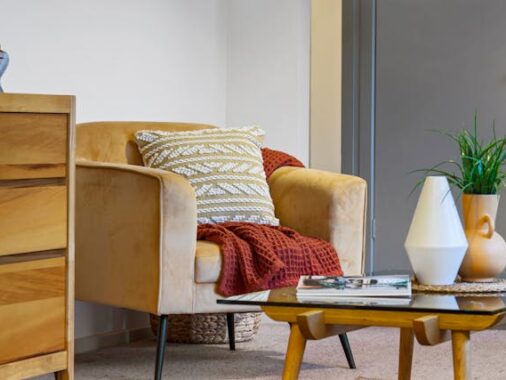Are you eager to give your living space a fresh new look without the expense and hassle of replacing tiles? Look no further than floor tile stencils! With a dash of creativity and some DIY enthusiasm, you can completely transform your floors into stunning works of art. In this comprehensive guide, we will walk you through the ins and outs of floor tile stencils, from the basics to the intricate design possibilities that they offer.
What are Floor Tile Stencils?
Floor tile stencils are thoughtfully designed templates crafted from durable materials, engineered to enable you to replicate the intricate look of tiles on your floors. Available in a diverse array of patterns and designs, you can choose from elaborate and ornate motifs to simpler and more modern styles.
Why Choose Floor Tile Stencils Over Traditional Tiling?
Opting for floor tile stencils carries several noteworthy advantages over traditional tiling methods. Firstly, they stand out as remarkably cost-effective, sparing you from the considerable expenses associated with purchasing and installing new tiles. Furthermore, stencils afford you the opportunity to infuse your floors with a distinct touch of your personality.
Getting Started with Floor Tile Stencils
1. Gather Your Materials
Before embarking on your creative journey, it’s crucial to assemble all the necessary materials. These include the stencils of your preference, painter’s tape to secure them, a foam roller for paint application, a paint tray, and high-quality floor paint.
2. Preparing the Surface
Preparing the surface properly is paramount to the success of your stenciling project. Begin by meticulously cleaning and drying the floor to ensure optimal adhesion. If any cracks or uneven patches are present, consider using a floor patch to establish a smooth and even canvas.
3. Positioning the Stencils
Once the surface is primed, it’s time to position the stencils. Employ painter’s tape to securely fasten the stencil in your desired location. Take care to align it precisely, ensuring consistency and uniformity in the final design.
Step-by-Step Stenciling Process
1. Applying the Base Coat
Begin the stenciling process by applying a base coat of paint using a foam roller. This initial coat functions as the background color against which your stencil design will stand out.
2. Stenciling the Design
Now comes the exciting part – stenciling the design onto your floor. Carefully place the stencil in its designated spot and use a different paint color to fill in the design itself. Utilize a gentle tapping motion with the foam roller to achieve even coverage within the stencil openings.
3. Adding Depth and Details
To elevate your stenciled design to the next level of authenticity, consider incorporating depth and shading. Achieve this by using slightly darker or lighter shades of the same color. This technique imparts dimension and realism to your stenciled tiles.
Design Ideas for Different Spaces
1. Classic Geometric Patterns for a Timeless Look
If you’re drawn to timeless aesthetics, classic geometric patterns are an excellent choice. Opt for designs like chevrons, herringbone, or basketweave to infuse your space with enduring charm. These patterns seamlessly complement both modern and traditional settings.
2. Moroccan-Inspired Designs for an Exotic Flair
For a touch of exotic allure, consider Moroccan-inspired stencil designs. Characterized by intricate patterns and luxurious motifs, these designs exude elegance. They are particularly captivating when applied in living rooms and dining areas.
3. Floral Motifs to Infuse Elegance
Embrace the beauty of nature by incorporating floral stencil motifs. These designs introduce a touch of softness and sophistication to any room. Whether in bedrooms, kitchens, or entryways, floral patterns add a sense of grace.
Tips for a Flawless Finish
1. Dealing with Imperfections
Mistakes happen, but they need not derail your project. Keep a damp cloth within reach to gently wipe away smudges or misplaced paint before they set. This proactive approach ensures your finished floor maintains its professional appearance.
2. Achieving Clean Lines
Clean lines are essential for a polished result. Press the stencil down firmly and apply paint in light layers for optimal precision. Multiple thin coats yield superior results compared to a single heavy application.
Caring for Stenciled Floors
Caring for your stenciled floors is key to preserving their longevity and appearance. Refrain from using abrasive cleaners, which could damage the design. Instead, opt for a soft mop or cloth for routine cleaning. Applying a clear sealant provides an additional layer of protection against wear and tear.
Frequently Asked Questions (FAQs)
Are floor tile stencils suitable for high-traffic areas?
Can I use floor tile stencils on outdoor surfaces?
Can I stencil over existing tiles?
How long does the stenciled design typically last?
Are there specialized stencils for specific design styles?
Conclusion:
Floor tile stencils offer an ingenious way to refresh your living space with a personal touch. By following the comprehensive steps outlined in this guide, you can create breathtaking and unique floors that will undoubtedly leave an indelible impression. So why wait? Transform your space now!





